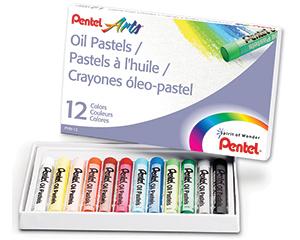Oil Pastals
Have you ever heard of oil pastals? These little sticks of color have been around for a long time, but their popularity seems to ebb and flow. In recent years, however, oil pastals have been gaining more attention. In this blog post, we'll explore the wonderful world of oil pastels and why you might want to give them a try.
Are you tired of traditional pastels?
If you've been using traditional pastels for a while, you may have noticed a few issues. You may find that they smudge easily, or the colors don't stay as vibrant as you'd like. Oil pastals, on the other hand, are much more forgiving. They don't smudge as easily, meaning you can layer colors without worrying about the mess. They also tend to keep their vibrancy, even after being applied to the paper.
The target of oil pastals
The target of oil pastals is artists who enjoy drawing and adding color to their work. If you're someone who loves experimenting with different mediums, then oil pastals are definitely worth a try. Whether you're a beginner or an experienced artist, these versatile sticks can help you take your creations to the next level.
Summary of main points
In summary, oil pastals are a great alternative to traditional pastels. They are more forgiving, vibrant, and versatile, making them a top choice for many artists. If you're someone who loves to experiment with different mediums and push the boundaries of your creativity, then oil pastels might be just what you're looking for.
The Target of Oil Pastals and Its Benefits
I remember the first time I tried oil pastels. I was hesitant at first, unsure of what to expect, but as soon as I began using them, I fell in love with the medium. The texture is different from other mediums, and the colors are so vibrant and rich.

Oil pastels are a unique medium, and the target of oil pastels is artists who want to take their work to the next level. Whether you're an experienced artist or just starting, oil pastels are a perfect choice. They're easy to work with and can be used in a variety of ways, from blending to layering.
Why You Should Try Oil Pastals
Oil pastals have a few key benefits that make them stand out from other mediums. First, they're much more forgiving than traditional pastels. You can layer colors without worrying about creating a mess, and you can easily correct mistakes. They're also very versatile and can be used in many different ways, from creating detailed drawings to sweeping landscapes.

Second, oil pastels tend to keep their vibrancy even after being applied to the paper. This means that you can create bold, vibrant pieces that really stand out. And third, oil pastels have a unique texture that really make your artwork stand out. The texture can be used to create depth and interest in your pieces.
Exploring Different Techniques with Oil Pastels
One of the best things about oil pastels is the variety of techniques you can use with them. Here are some techniques you can try:
- Blending: Use your fingers, a blending tool, or a brush to blend your colors together. This creates a soft, smooth effect.
- Scumbling: This technique involves applying your colors in a circular, scribbled motion. This creates a textured effect.
- Hatching: Draw parallel lines in one direction, then add lines in the opposite direction to create a crosshatched effect.
- Layering: Layer your colors to create depth and richness in your piece.
Choosing the Right Paper
When working with oil pastels, it's important to choose the right paper. You'll want to look for paper that has a bit of tooth, or texture, to it. This will help the pastels adhere to the paper and keep them from smudging.
You can also experiment with different colored papers. Darker papers will give your piece a more dramatic effect, while lighter papers will create a softer, more delicate effect.
Answers to Some Common Questions About Oil Pastels
1. Q: Do oil pastels dry?
A: No, oil pastels do not dry. They remain soft and malleable, even after being applied to the paper.
2. Q: Can you mix oil pastels with other mediums?
A: Yes, oil pastels can be mixed with a variety of other mediums, including paint, pencil, and ink.
3. Q: Do you need to fix oil pastels?
A: Fixative can be used to keep your artwork from smudging, but it's not always necessary.
4. Q: Are oil pastels water-soluble?
A: No, oil pastels are not water-soluble. They are made from an oil binder and dry pigment, making them resistant to water.
Conclusion of Oil Pastals
Oil pastels are a unique and versatile medium that any artist should give a try. They're more forgiving than traditional pastels, and the vibrant colors will really make your artwork stand out. With a bit of experimentation and practice, you can really take your artwork to the next level with oil pastels.
Gallery
Oil Pastals + Hair Spray Works Good First Spray Then Color Also Good
Photo Credit by: bing.com /
Things To Do In Buenos Aires: Cooking With Norma, Grandiose Grave
Photo Credit by: bing.com / lentil grandiose aires grave
Got My First Set Of Oil Pastels For Christmas. What Do You Think
Photo Credit by: bing.com / oil christmas pastels set first think got comments oilpastel
Oil Pastels, Pack Of 12 - Supplies East Riding
Photo Credit by: bing.com / pastels
Dairy Free Mediterranean Pasta With Explore Cuisine's Organic Red
Photo Credit by: bing.com / dairy pasta lentil penne mediterranean organic red explore dishes food cuisine comments


